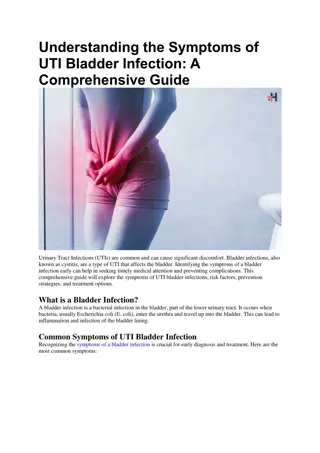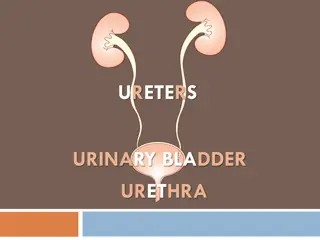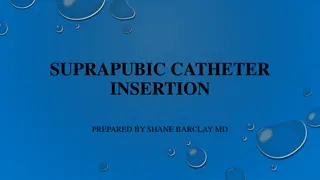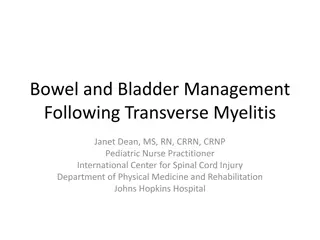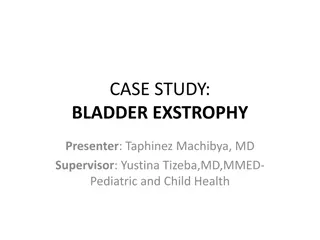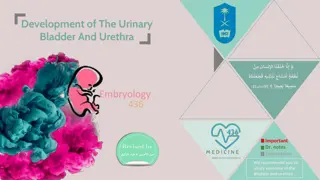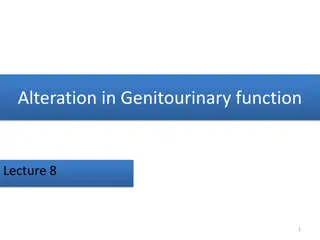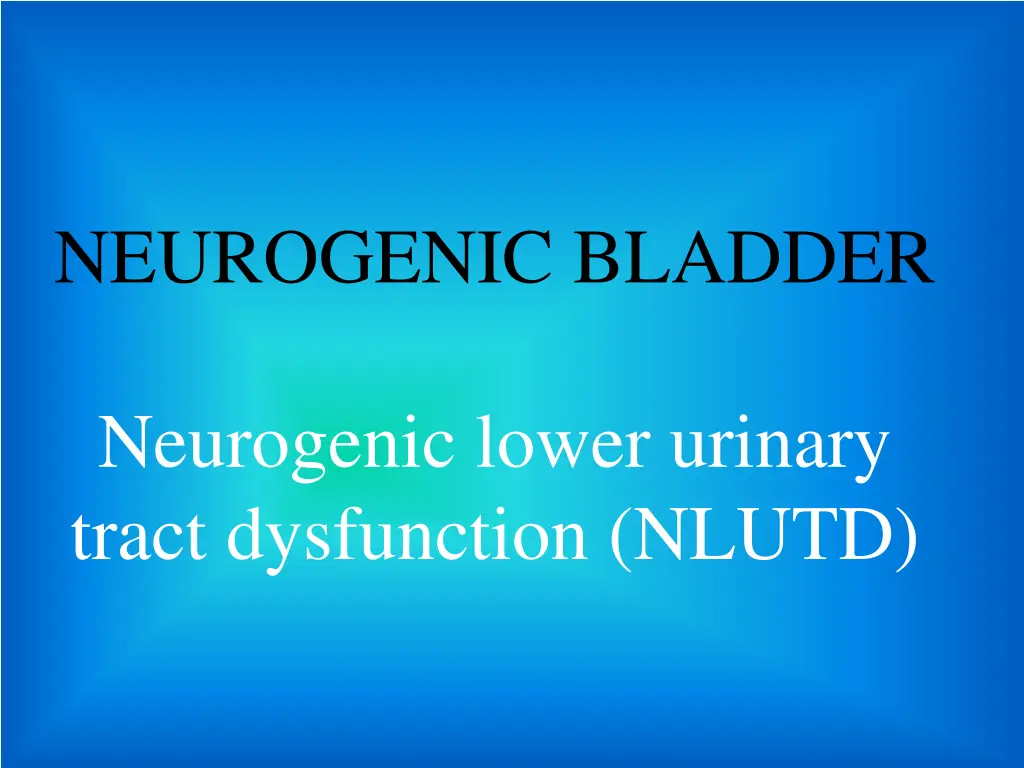
Understanding Normal Bladder Function and Neurogenic Bladder Dysfunction
Explore the normal functioning of the bladder unit, including its capacity, sensation, and control. Learn about the sphincteric unit, innervation, and neurophysiology, crucial for micturition. Discover neurogenic lower urinary tract dysfunction (NLUTD) caused by nervous pathology.
Download Presentation

Please find below an Image/Link to download the presentation.
The content on the website is provided AS IS for your information and personal use only. It may not be sold, licensed, or shared on other websites without obtaining consent from the author. If you encounter any issues during the download, it is possible that the publisher has removed the file from their server.
You are allowed to download the files provided on this website for personal or commercial use, subject to the condition that they are used lawfully. All files are the property of their respective owners.
The content on the website is provided AS IS for your information and personal use only. It may not be sold, licensed, or shared on other websites without obtaining consent from the author.
E N D
Presentation Transcript
NEUROGENIC BLADDER Neurogenic lower urinary tract dysfunction (NLUTD)
NORMAL VESICAL FUNCTION The Bladder Unit The functional features of the bladder include: 1. a normal capacity of 400 500 ml. 2. a sensation of fullness. 3. the ability to accommodate various volumes without a change in intra-luminal pressure. 4. the ability to initiate and sustain a contraction until the bladder is completely empty. 5. voluntary initiation or inhibition of voiding despite the involuntary nature of the organ.
NORMAL VESICAL FUNCTION The Sphincteric Unit: There are 2 sphincteric elements: (1) an internal involuntary smooth-muscle sphincter at the bladder neck. (2) an external voluntary striated-muscle sphincter from the prostate to the membranous urethra in males and at the mid urethra in females.
NORMAL VESICAL FUNCTION INNERVATION & NEUROPHYSIOLOGY: Parasympathetic S2-S4 (hypogastric nerves): supply both the bladder and smooth-muscle sphincter. . acetylcholine. Sympathetic T10 L2 (pelvic nerves): innervate the smooth muscles of the bladder base, internal sphincter, and proximal urethra .. Noradrenaline. Somatic motor innervations originate in S2 S3 and travels via the pudendal nerve to the striated urethral sphincter. There are both somatic and visceral afferents from the bladder and urethra.
Normal Micturition - Physiology Normal micturition cycle requires that the urinary bladder and the urethral sphincter work together as a coordinated unit to store and empty urine. 2 phases Filling (Storage ) : Bladder is a low-pressure reservoir. Urinary sphincter : closed with high resistance to urinary flow. Emptying : Bladder contracts to expel urine. Urinary sphincter : opens to allow urinary flow.
Neurogenic lower urinary tract dysfunction (NLUTD) A lower urinary tract dysfunction secondary to confirmed pathology of the nervous supply.
RISK FACTORS Brain tumours Dementia Mental retardation Cerebral palsy Parkinson disease Cerebrovascular pathology (CVA) Multiple sclerosis Spinal cord lesions Disc disease Spinal stenosis and spine surgery Peripheral neuropathy: DM, Alcohol abuse, B12 deff. Human immunodeficiency virus HIV Iatrogenic: Abdominoperineal resection, hysterectomy or pelvic irradiation for cervical cancer
Spastic Neuropathic Bladder The patient may have frequency, nocturia, urgency or urinary incontinence. Involuntary urination is often frequent, spontaneous, scant.
Flaccid (Atonic) Bladder The principal urinary symptom is retention with overflow incontinence.
URODYNAMIC STUDIES An important part of the evaluation of patients with voiding dysfunctions. It can provide useful clinical information about the function of the urinary bladder, the sphincteric mechanism, and the voiding pattern itself.
URODYNAMIC STUDIES Uroflowmetry: the study of the flow of urine from the urethra. The normal peak flow rate for males is 20 25 ml/s and for females 20 30 ml/s. Cystometry: the urodynamic evaluation of the reservoir function of the bladder. Urethral Pressure Recordings: both during filling and during voiding. Electromyography: to monitor the activity of the striated urethral muscles without obstructing the urethral lumen.
TREATMENT Spastic Neuropathic Bladder: #Medical therapy: anticholinergic drugs. #Botulinum-A Toxin #Timed voiding. #A permanent indwelling catheter. #A condom catheter. #Performance of a sphincterotomy in males. #Conversion of the spastic bladder to a flaccid bladder through sacral rhizotomy. #Neurostimulation of the sacral nerve roots to accomplish bladder evacuation. #Urinary diversion.
TREATMENT Flaccid Neuropathic Bladder: Bladder evacuation can be accomplished by straining, using the abdominal and diaphragmatic muscles to raise intra-abdominal pressures. Bladder training and timed voiding. CISC (clean intermittent self catheterization) Medications: parasympathomimetics.
Complications Recurrent infection Hydronephrosis Stones formation Deterioration of renal function Renal Amyloidosis Sexual Dysfunction
Autonomic Dysreflexia seen in patients with cord lesions above the sympathetic outflow from the cord. As a rule, it occurs in rather spastic lesions above T1. Symptoms: elevations in blood pressure, sweating, bradycardia, headache, and piloerection. Symptoms are brought on by over-distention of the bladder. Immediate catheterization is indicated and usually brings about prompt lowering of blood pressure.






